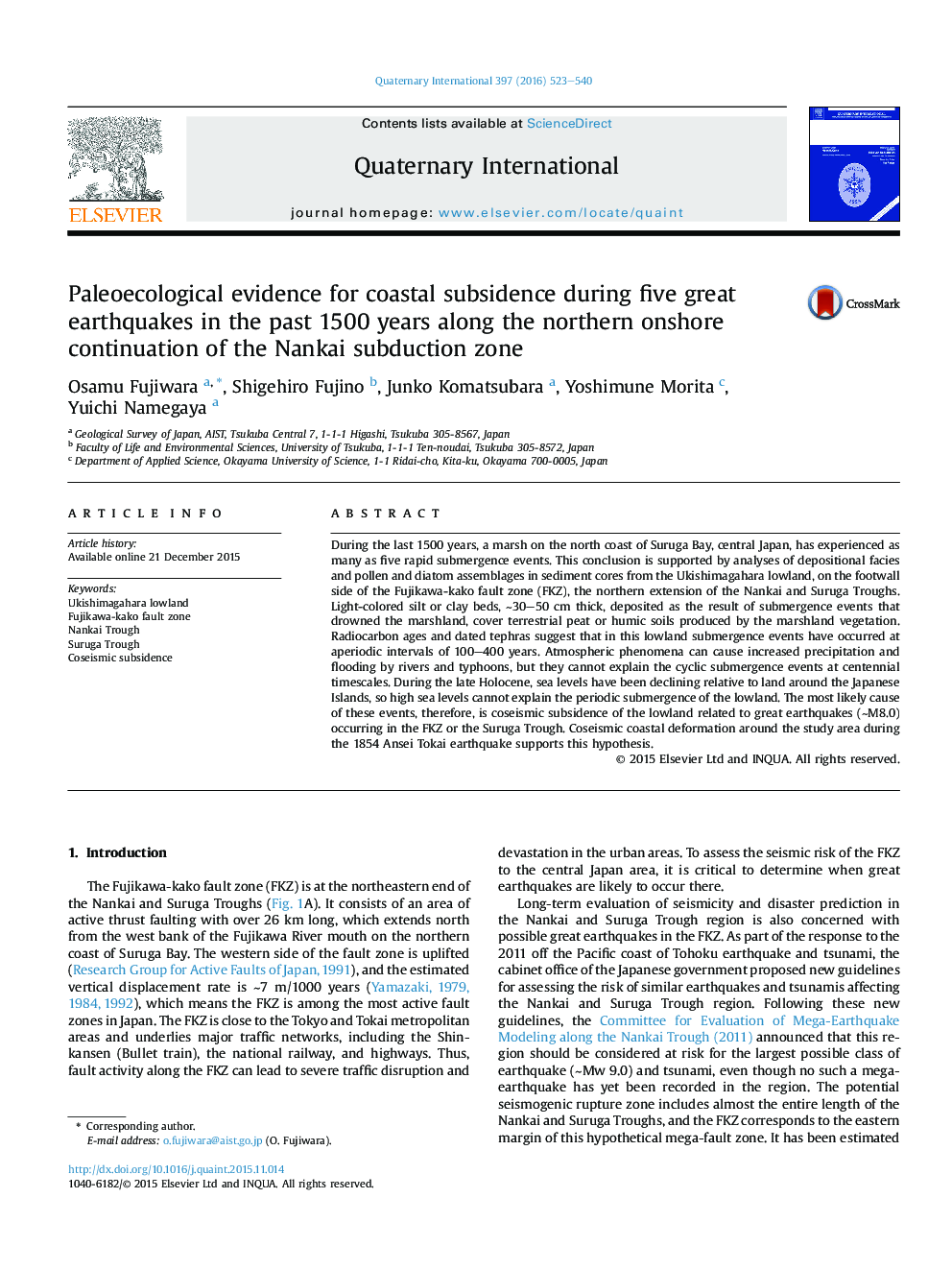| Article ID | Journal | Published Year | Pages | File Type |
|---|---|---|---|---|
| 7451390 | Quaternary International | 2016 | 18 Pages |
Abstract
During the last 1500 years, a marsh on the north coast of Suruga Bay, central Japan, has experienced as many as five rapid submergence events. This conclusion is supported by analyses of depositional facies and pollen and diatom assemblages in sediment cores from the Ukishimagahara lowland, on the footwall side of the Fujikawa-kako fault zone (FKZ), the northern extension of the Nankai and Suruga Troughs. Light-colored silt or clay beds, â¼30-50Â cm thick, deposited as the result of submergence events that drowned the marshland, cover terrestrial peat or humic soils produced by the marshland vegetation. Radiocarbon ages and dated tephras suggest that in this lowland submergence events have occurred at aperiodic intervals of 100-400 years. Atmospheric phenomena can cause increased precipitation and flooding by rivers and typhoons, but they cannot explain the cyclic submergence events at centennial timescales. During the late Holocene, sea levels have been declining relative to land around the Japanese Islands, so high sea levels cannot explain the periodic submergence of the lowland. The most likely cause of these events, therefore, is coseismic subsidence of the lowland related to great earthquakes (â¼M8.0) occurring in the FKZ or the Suruga Trough. Coseismic coastal deformation around the study area during the 1854 Ansei Tokai earthquake supports this hypothesis.
Keywords
Related Topics
Physical Sciences and Engineering
Earth and Planetary Sciences
Geology
Authors
Osamu Fujiwara, Shigehiro Fujino, Junko Komatsubara, Yoshimune Morita, Yuichi Namegaya,
